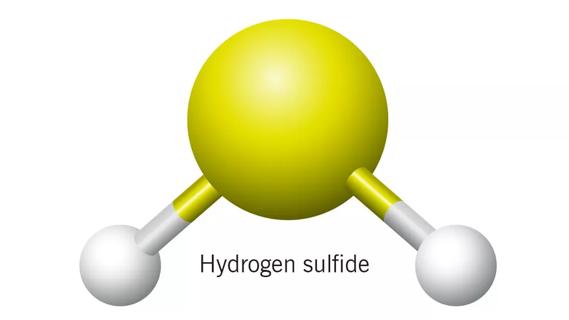Advertisement
Research identifies clustered molecular responses to hyperammonemia

The loss of skeletal muscle mass and function known as sarcopenia is a common complication in cirrhosis, reducing quality of life and increasing mortality.
Advertisement
Cleveland Clinic is a non-profit academic medical center. Advertising on our site helps support our mission. We do not endorse non-Cleveland Clinic products or services. Policy
Although the overall pathogenesis of sarcopenia is unknown, hyperammonemia — the excessive accumulation of ammonia in skeletal muscle — has emerged as a mediator of dysregulated skeletal muscle proteostasis and signaling perturbations that characterize cirrhotic sarcopenia.
In an effort to further clarify hyperammonemia’s role in sarcopenia, Cleveland Clinic researchers have discovered several previously unidentified molecular interaction pathways that change over time with exposure to ammonia. The enriched pathways accelerate skeletal muscle senescence and oxidative dysfunction. The pathways are present in multiple models of hyperammonemia.
Gastroenterologist and physician-scientist Nicole Welch, MD, presented the team’s findings during the recent American Association for the Study of Liver Diseases annual meeting.
“Ammonia is a mediator of the liver-muscle axis and a cytotoxic molecule generated physiologically,” Dr. Welch notes. “We know that skeletal muscle hyperammonemia causes metabolic and molecular perturbations, but the global metabolic and molecular responses to hyperammonemia are not well understood.”
To fill this gap, Dr. Welch and colleagues used a multi-model, multi-omic, unbiased approach with experimental validation to examine the processes and impact of elevated ammonia levels in skeletal muscles at the molecular level. The cellular models used in testing were differentiated C2C12 mouse myotubes (precursors of contractile skeletal muscle cells), gastrocnemius muscle tissue from mice, and vastus lateralis muscle tissue from human cirrhosis patients and healthy controls. The myotubes and gastrocnemius muscle cells were treated with ammonium acetate to simulate hyperammonemia.
The researchers hypothesized that a multi-omics systems biology approach using vertical and horizontal integration would identify novel targets for sarcopenia in cirrhosis. They aimed, according to Dr. Welch, to do the following:
Advertisement
“Most studies of sarcopenia in chronic disease have focused on specific perturbations in molecular or metabolic pathways; however, in a living cellular system, such molecules and pathways tend to interact with each other at multiple levels,” notes Dr. Welch. “For instance, metabolites regulate signaling molecules, and signaling molecules regulate metabolic products. Similarly, functional responses of subcellular organelles depend on signaling and metabolic responses.
“There are no studies that have integrated multiple levels of responses across different models. Such an analysis allows one to identify critical molecules and pathways that are not only mediators of, but are also potential targets for, therapeutic interventions to reverse sarcopenia,” she says. “Our approaches are also of broad interest because a complementary vertical and horizontal integration analysis is of relevance in both science and clinical medicine.”
Using this multifaceted approach, the researchers further validated that hyperammonemia is a mediator of sarcopenia in liver disease, says Dr. Welch.
Advertisement
The findings “highlight our ability to develop novel analytical approaches to unbiased data, which included vertical and horizontal integration and identification of temporal clusters and molecular changes.
“We also identified metabolic regulation of transcriptional and translational responses, many of which have been validated by hypothesis-driven studies previously published or our current work,” she says.
The molecular interactions identified by the researchers showed distinct clusters at specific time points. Within the mouse proteomics dataset, the study authors reported that the enriched pathways included Hypoxia Inducible Factor 1 Subunit Alpha (HIF1α, which regulates cellular and systemic response to hypoxia), apoptosis and senescence signaling. The researchers observed shared enrichment of cell cycle regulation, senescence, HIF1α and oxidative stress pathways between mouse and human muscle.
“Novel observations included increased senescence response,” Dr. Welch explains. “We are especially interested in this because skeletal muscle cells are not actively dividing, but there is a post-mitotic senescence that we are identifying with hyperammonemia.
“We also found alterations in calcium signaling, along with maintained cell viability,” she adds. “And some of these conserved pathway enrichments across vertical and horizontal integrations explain muscle atrophy and contractile dysfunction, or physical frailty, which we find in patients with cirrhosis without actually seeing any cell death.”
This analysis offers new insights into the pathogenesis of sarcopenia in cirrhosis and lays the foundation for ongoing investigation by Dr. Welch and colleagues, including her mentor, Cleveland Clinic hepatologist Srinivasan Dasarathy, MD, whose pioneering work has had a significant impact on this area of investigation.
Moving forward, she says, the researchers plan to use the successful framework of this current study to further explore post-mitotic senescence in hyperammonemia as well as HIF1α stabilization and signaling.
“Our ultimate goal is to take the lab bench work back to the bedside,” Dr. Welch says. “We want to develop therapies in a translational way against these targets. Like with any study, we are always working toward better patient care and outcomes.”
Advertisement
Advertisement

Large-scale joint study links elevated TMAO blood levels and chronic kidney disease risk over time

Investigators are developing a deep learning model to predict health outcomes in ICUs.

International collaboration is most genetically diverse study of the disease to date

Preclinical work promises large-scale data with minimal bias to inform development of clinical tests

Cleveland Clinic researchers pursue answers on basic science and clinical fronts

Study suggests sex-specific pathways show potential for sex-specific therapeutic approaches

Cleveland Clinic launches Quantum Innovation Catalyzer Program to help start-up companies access advanced research technology

Research project aims to pinpoint biomarkers that could speed diagnosis